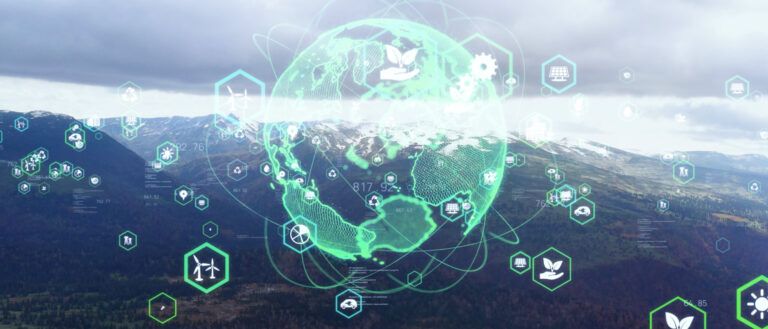Green-Collar Jobs: Are You Ready to Join This Workforce?

For decades, the global economy has been filled with white- and blue-collared workers like you and me. But since climate scientists and economists have begun speaking of going green, there emerged a need for workers with the knowledge and skills to support environmental sustainability. The term “green-collar jobs” has been loosely defined and used since the 90s, but put simply, it’s anyone employed in the sustainable industry or environmental sectors of the economy. This can include industries like energy efficiency, renewable energy, waste management, environmental protection, recycling, fuel alternatives, and so on. Some examples of green-collar jobs are:
- Designing sustainable buildings
- Making buildings more energy-efficient
- Helping factories reduce carbon emissions
- Assisting organizations to make green business decisions
- Manufacturing eco-friendly products
The portion of green talent in the global workforce has grown from 9.6% in 2015 to 13.3% so far in 2022, according to LinkedIn’s latest Global Green Skills Report 2022. And while over 300 million green-collar jobs will emerge by 2050, not all of our workforce is equipped with the skills required to make the transition. If you’re actively seeking a transition into the green industry, you are at an advantage since
- You have transferable skills that can be used pan-industry.
- You have the necessary upskilling options to equip yourself to do so.
Here’s how you can carve the pathway into the green workforce and future-proof your career.
What are Green-Collar Jobs?
Companies and C-suite leaders are fast recognizing that transforming the global economy to achieve net-zero emissions is an unprecedented economic opportunity. After the industrial revolution, jobs were traditionally split into blue-collar (manual jobs) and white-collar (desk jobs). However, when the United Nations Sustainable Development Goals (UN SDGs) were set up in 2015, many companies started realizing the role they could play in planet protection. This led to the creation of a new workforce known as green-collar workers. These individuals focused on improving the environment directly or indirectly through their daily tasks. Their role was and will continue to be central to economic recovery and growth, especially in the next three decades, as per the National Grid.
ALSO READ: With No ‘Plan’et B, Here’s Why Sustainability in Business is Important
 Top 5 Green-Collar Jobs in the Market Today
Top 5 Green-Collar Jobs in the Market Today
Since the Green Jobs Act of 2007 came into effect, green-collar jobs and the sustainable economy have skyrocketed. The green economy is now estimated to be a $1.3 trillion sector, making up 7% of the annual US GDP. Here are five lucrative green-collar jobs as per Indeed:
| Job Role | Average Annual Salary (in USD) |
| Sourcing Specialist | $60,284 |
| Energy Consultant | $83,076 |
| Environmental Engineer | $84,433 |
| Sustainability Engineer | $100,144 |
| Green Consultant | $114,452 |
ALSO READ: Are You Ready for These 5 Exciting Jobs of the Future: Find Out Today!
Why are Green-Collar Jobs in Demand?
In a 2021 Pew Research, 71% of millennials and 67% of Gen Z said that climate change should be the top government priority today. They believed that this is the only way to ensure a sustainable planet for future generations.
In addition to such high levels of climate awareness, nine of ten workers, as per Harvard Business Review, also reported that they would be willing to earn a little less if they got to do more meaningful work. Therefore, green-collar jobs are thriving as they appeal to a workforce that is eager to make an impact and catalyze change.
ALSO READ: Why Companies With Sustainable Development Goals Matter to Job Seekers
Skills Needed to Join the Green-Collar Workforce
Forward-thinking companies are consistently trying to reduce their carbon footprint and use renewable resources to create a positive impact on the environment. An offshoot of this development is that green-collar employees, like sustainability managers and energy consultants, are in huge demand. They are being hired and trained to help companies adopt green measures and transition seamlessly without adversely impacting profits.
In order to reduce the barrier to entry, green-collar jobs tend to offer more on-the-job training and resources to raise their workforce. Additionally, rather than completely re-training employees or hiring new ones, companies are also focusing on upskilling workers to reduce costs. As per HR magazine, an estimated 80% of the skills needed for a new green-collar workforce already exist today and are completely transferable.
 Here are the top six skill categories as per World Economic Forum for those looking to enter the green workforce.
Here are the top six skill categories as per World Economic Forum for those looking to enter the green workforce.
- Science skills
- Architectural and planning skills
- Green engineering and tech skills
- Agriculture skills
- Environmental rights and justice skills
- System design skills
ALSO READ: Why is Sustainability in Business Important and How to Achieve it
How To Get a Lucrative Green-Collar Job?
PwC’s Future of Work Report – A Journey to 2022 found that 65% of people across China, Germany, India, the UK, and the US want to work for an organization with a strong social conscience. This is pushing 36% of HR professionals to build their hiring strategies around their organization’s social and environmental stance.
Check out this job portal to find the latest openings in sustainability. If you wish to know more about the space and stay up to date, then subscribe to this podcast by Ernst & Young and check out this online newspaper by Business Green.
Organizations are looking for professionals who can deliver large-scale solutions via business innovation while keeping the planet, people, and profits in mind. If you are interested in such roles and wish to enter the green workforce, then check out some of the sustainability courses offered by Emeritus in association with the world’s top universities. Learn the right skills, build a great network, and grab a lucrative role. Here are the top five sustainability courses actively open for admission on the Emeritus website:
| Name of the Course | University | Duration |
| Business Sustainability: Strategies for Leadership and Change | Singapore Management University | 8 weeks |
| Circular Economy and Sustainability Strategies | University of Cambridge Judge Business School | 6 weeks |
| Circular Fashion Management: Building Sustainable Value Chains | SDA Bocconi School of Management | 6 weeks |
| Sustainability Leadership Program: Leadership with a Purpose | Imperial Business School | 15 weeks |
| Sustainability Leadership: Innovation for Growth | University of Toronto, Rotman School of Management | 6 weeks |
Terminology Glossary
| Term | Meaning | Know More |
| Net Zero | Net zero means cutting greenhouse gas emissions to as close to zero as possible, with any remaining emissions re-absorbed from the atmosphere, by oceans and forests for instance. | United Nations Website |
| Carbon Emissions | CO2 or Carbon Dioxide Emissions means the release of greenhouse gases and/or their precursors into the atmosphere over a specified area and period of time. | OECD Website |
| Carbon Footprint | A carbon footprint is the total amount of greenhouse gases (including carbon dioxide and methane) that are generated by our actions. | The Nature Conservancy Website |
Write to us at content@emeritus.org






